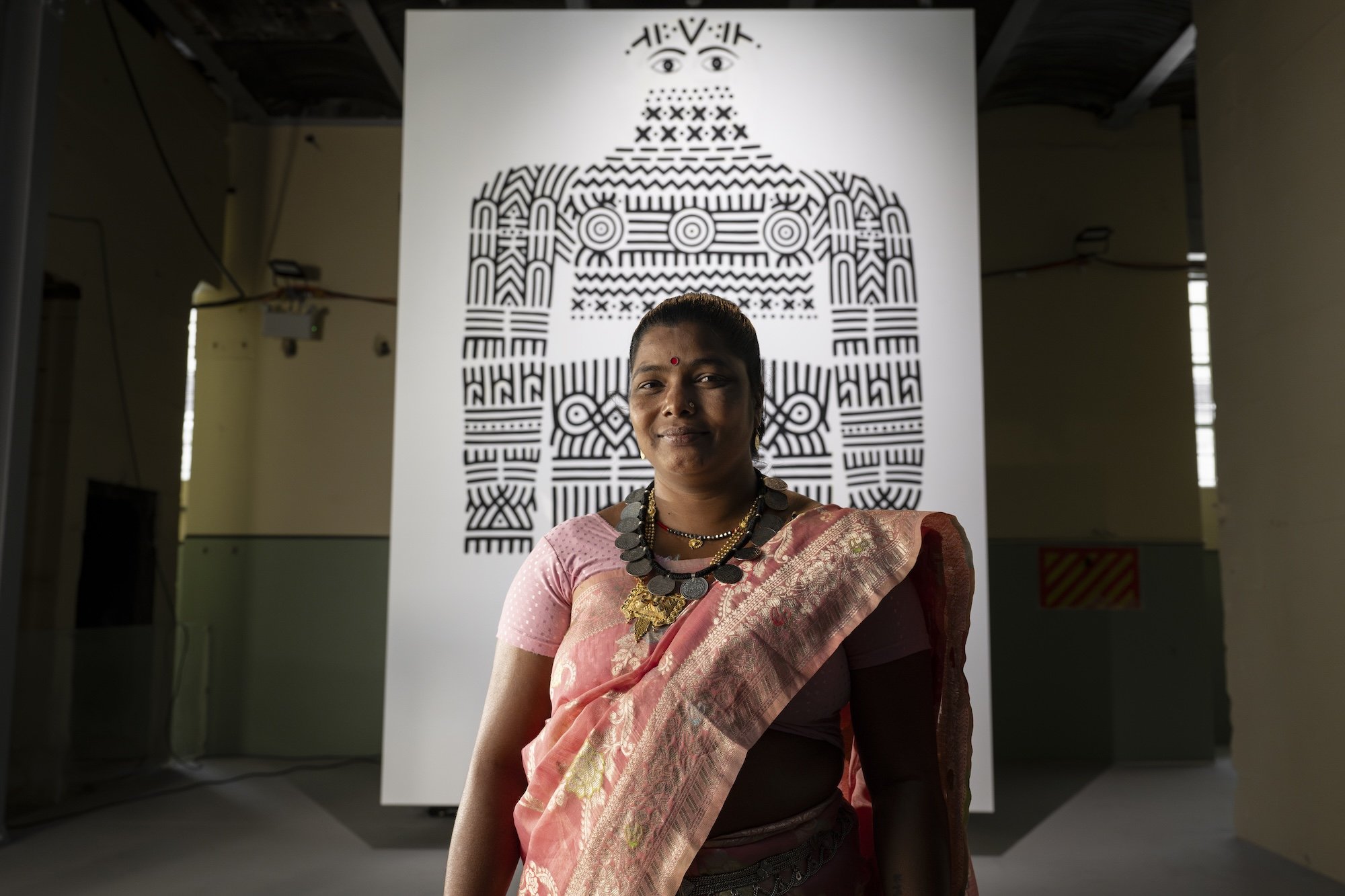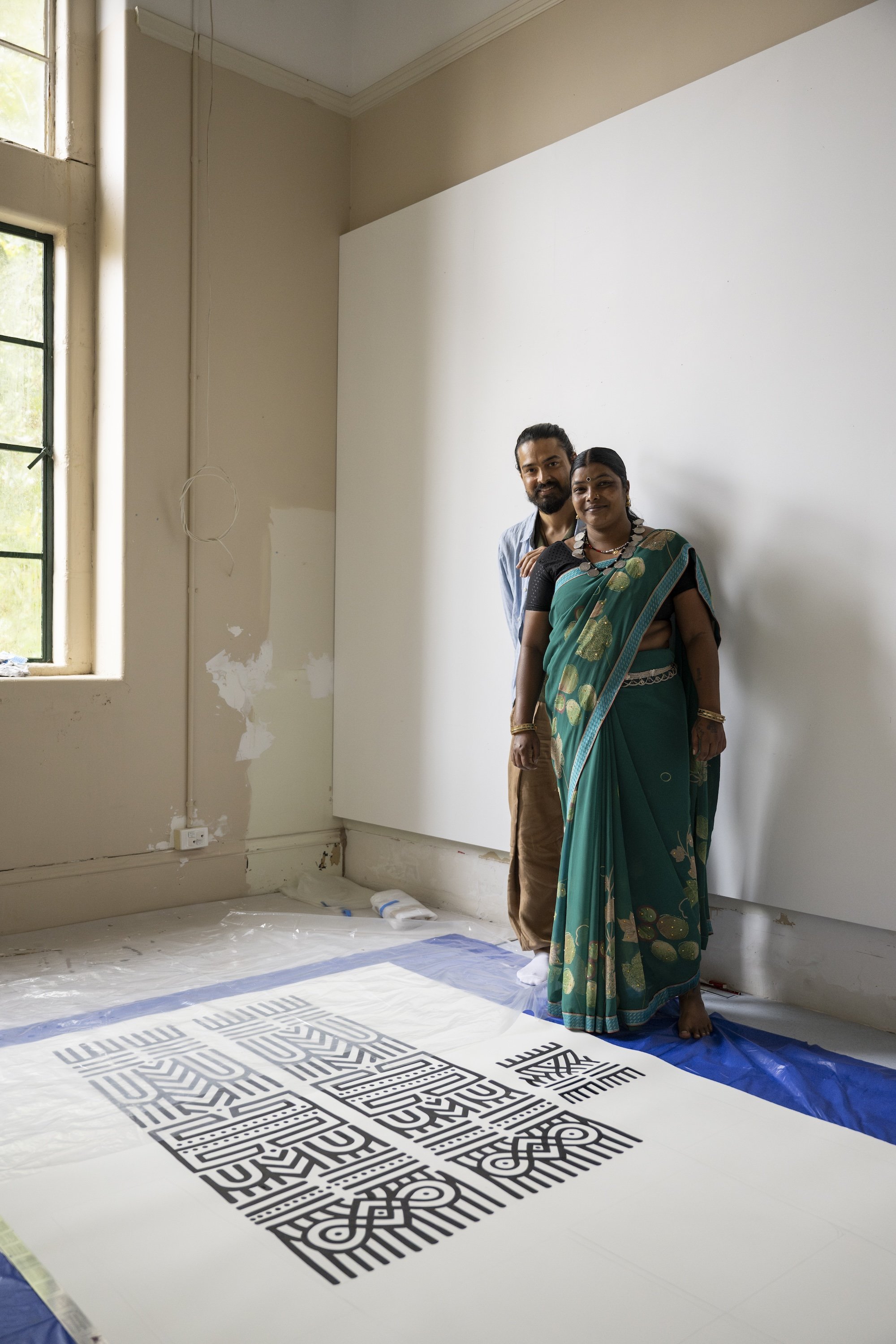How Mangala Bai Maravi is preserving the Baiga art of tattooing
/Mangala Bai Maravi was born in Lalpur, a small village in the Dindori district of Madhya Pradesh, India. The daughter of Shanti Bai Maravi, a well-known Baiga tattoo artist from Lalpur, Mangala has developed an interesting way to revive and preserve Baiga tattoo culture by translating tribal tattoo designs on to paper and canvas. This has not been done before. Historically, the designs were passed down through oral tradition, or worked on from memory. Mangala’s innovative works on papers and canvas are keeping her Baiga tradition alive and have drawn international attention to the distinctive tattoos and culture of the Baiga people, while also providing a dependable source of income for her family.
At just seven years old, Mangala took an oath to learn everything she could about her own traditions and culture from her mother. By the time she was twelve, Mangala’s sole dream was that it would be her, out of all her brothers and sisters, who would carry on the Godna tradition of tattooing.
Throughout her life, Mangala has always been interested to discover more about the stories behind every symbol and motif of her ritual patterns. She perfected the tattooing technique after many years of training with and learning from her mother, who passed everything she knew down to Mangala. In the Baiga tribe, only women can carry this tradition ahead. When travelling with her mother, Mangala started to learn how to paint on canvas and paper. She then fused this knowledge with her tattooing technique.
The motifs of Baiga tattoos are primarily inspired by the natural world. Patterns of triangular lines depict mountains, while the circular motif of the sun is often a central feature. Symmetrical lines, which vary in thickness, and dots and crosses are the other major shapes that recur in Baiga tattoos.
Baiga women often have elaborate tattoos on multiple body parts, including on their forehead, arms, legs, back, neck and breasts. Different parts of the body are adorned to mark different milestones in life. The forehead tattoo is done around puberty to mark entry into adulthood. Arms and legs are completed by the time a woman is considered of an age appropriate for marriage. These tattoos are linked with ideas of beauty, healing and history. They are also believed to be carried into the afterlife because the ink integrates with the body itself.
Mangala is doing everything possible to keep this tradition of India alive. I believe Mangala has the courage and strength to make the Baiga people’s Godna tradition approachable for everyone around the world who is interested in learning about this art form and willing to approach it with love and respect.
Amit Arjel-Sharma
Amit Arjel-Sharma is an artist assistant to Baiga artist Mangala Bai Maravi. Both were recently in residence at the University of Sydney, where they worked on a series of paintings that were displayed at the Chau Chak Wing Museum and White Bay Power Station as part of the 24th Biennale of Sydney. Amit is both a close friend of and a translator for Mangala, having spent years working with and learning the ways of the Baiga. Amit shares Mangala’s story here with her input and permission.
This article was originally published in Art Monthly Australasia’s special edition about the 24th Biennale of Sydney. Purchase a copy here.





















